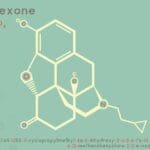We try to provide our kids with a perfect childhood.
Often, we remember things that went wrong in our own lives as children, and we work hard to make sure the cycle is not repeated. But in truth, hardly anyone’s childhood could be considered perfect—despite our best intentions for our kids or our parents’ best intentions for us. Even in loving families with financial resources and other advantages, the challenges of life are simply unavoidable.
But when the negative things that happen to a child are truly traumatic, the lasting effect on that person’s life can be devastating. In fact, the Centers for Disease Control have connected childhood trauma to problematic decision-making and health problems later in life.
Those poor decisions and negative health consequences can have dramatic effects. By some estimates, a person’s life expectancy could be reduced by two full decades—20 years—if they experience trauma in their youth. One reason for this is the correlation between substance use disorders and adverse childhood experiences.
Identifying Adverse Childhood Experiences (ACEs)
The initial Adverse Childhood Experience Study used a sample of 17,500 adults and focused on 10 types of traumatic experiences that children might undergo. Those 10 kinds of trauma can be listed in a few categories:
- Abuse: physical, sexual, or emotional; or witnessing domestic violence
- Neglect: physical or emotional
- Parental issues: mental illness, substance use, incarceration, or separation/divorce
Since that original study, the list of adverse childhood experiences has been expanded to include:
- Racism, being an immigrant, or having a parent deported
- Witnessing the abuse of a sibling or violence outside the home
- Repeatedly moving, homelessness, living in an unsafe area or war zone, or being placed in foster care
- Experiencing bullying or attending a school with a zero-tolerance discipline policy
- Interaction with the criminal justice system
What Are the Impacts of ACEs?
The original ACEs study suggested that the prevalence of trauma in a person’s childhood was directly associated with a variety of negative outcomes in later life. According to the research, 67 percent of adults had experienced at least one of the traumas on the original ACE list of ten. Twelve percent of adults had undergone at least four of the ACEs. Given that the list of ACEs has been substantially expanded, it is likely that both of those percentages have gone up dramatically.
People with an ACE score of four are:
- Up to four times more likely to use drugs or alcohol and to start using them at a younger age
- Four times more likely to experience depression
- Seven times more likely to become an alcoholic
- Twelve times more likely to consider or attempt killing themselves
A person with an ACE score of five is:
- Three times more likely to misuse prescription pain meds
- Up to 10 times more likely to use or become addicted to illegal drugs
These issues can be traced to actual changes in the makeup of the brain that are caused by ACEs. Those changes include:
- Damage to the reward and pleasure centers of the brain (which can increase the likelihood of developing a substance use disorder)
- Inhibited function of the prefrontal cortex, which is important to impulse control
- Continuous activation of the amygdala—the area of the brain responsible for fear—which results in continuous release of stress hormones at an unsafe level
Prevent When We Can, Build Resilience When We Must
Ideally, we could all come together to eliminate the various causes of adverse childhood experiences. To that end, the Centers for Disease Control has created ACEs training for parents and professionals who work with families. The hope is that these trainings can increase adults’ understanding of trauma and its impact on children, thereby reducing its prevalence.
But it would be naïve to suggest that all traumatic moments can be prevented. And so it is important to help children and adults build personal resiliency as a coping mechanism. People who are resilient are generally optimists, cognitively flexible, employ active coping skills, build a strong social network, take care to maintain their physical wellbeing, and possess a strong moral compass.
Those may sound like traits one either has or doesn’t have, but the truth is resiliency can be developed over time. Some possible routes to greater personal resiliency include mindfulness and meditation, talk therapy, yoga, music or art therapy, and more.
For some, substance use can become what Dr. Daniel Sumrok has called “ritualized compulsive comfort seeking” as a response to adverse childhood experiences. Significantly, the same habits of body and mind that build resiliency can also help an individual overcome a substance use disorder and avoid relapse. ACEs and addiction may be linked, but it might be a comfort to know that approaches to addressing both problems are also linked.
Let The Aviary Recovery Center Be Your Ace in the Hole
Maybe adverse childhood experiences are responsible—at least in part—for your substance use disorder (or that of a loved one). The Aviary Recovery Center is well versed in approaches and treatments that can lessen the impact of the ACEs in your past and help you chart a new course toward the future. We are eager to help you build up your personal resiliency as a support structure for building a better life. We’re ready to help you discard your ACEs to improve the hand you are playing.
(314) 464-0222. We’re here to help.










